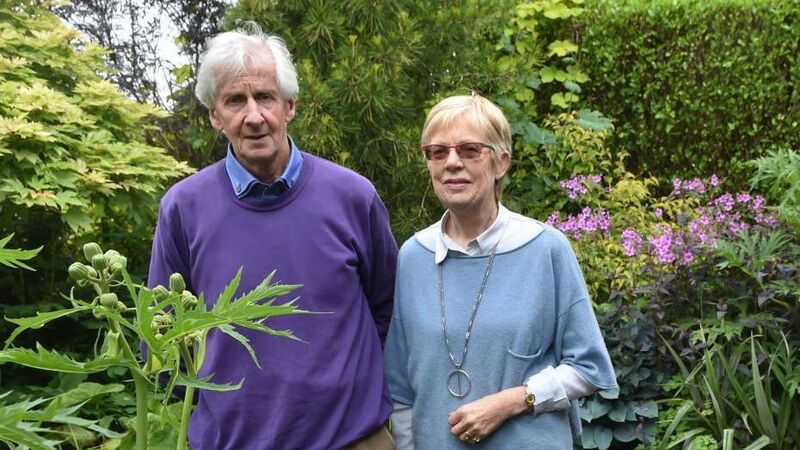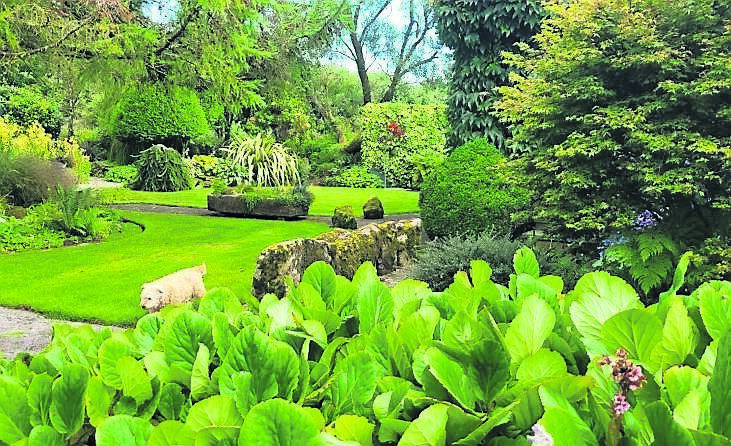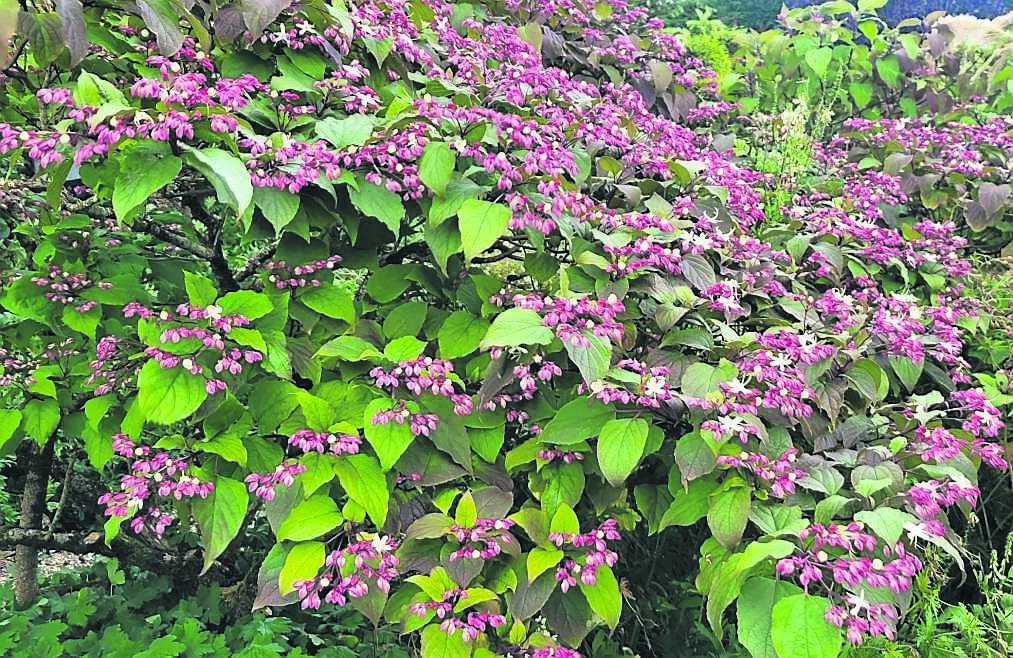Cork couple's garden is a labour of love for past 50 years

ABOVE: Maurice and Gertie O’Donoghue in their garden in Carrignavar, Co Cork. Picture: Dan Linehan
AS August arrives, the light begins to change. With the sun lower in the sky, longer shadows are cast, and the light takes on a more golden, mellow hue.
One of the first signs for me of the changing seasons is the resident starlings beginning to gather together in numbers in preparation for winter. It is believed that they gather to roost in numbers and also to exchange information about where food is located.
The numbers of starlings swells during winter as many flock here from mainland Europe to enjoy our less severe winters. The spectacular starling murmurations can be enjoyed in the skies from December until the springtime.
The summer may be beginning to subside, with hints of autumn creeping in, but there is still much interest and enjoyment to be had in the garden.
The garden is at its best now and will continue to provide much joy for months yet.
A recent visit to a local garden in Carrignavar revealed a garden created by a couple with a great love for plants, nature, place and sculpture.
Gertie and Maurice O’Donoghue have carved out a sheltered haven in a pretty, windswept location at Dromboy, close to Carrignavar, and they regularly open their garden for charity.
The couple have been working together on this garden for about 50 years and it is a labour of love for both of them.
The garden comprises about 1.5 acres in total and is north-facing, which made getting some shelter around the perimeter essential before the garden could be created. This was done using hedging and trees - there are many conifers creating the backbone of the garden, including cryptomeria, larch, and pines, and hedging, including grisellinia and thuja, which all contribute to breaking the wind and creating a more favourable growing environment for the acers and other plants requiring shelter within.
The area immediately around the house was the first to be planted and is now the most established, providing plenty of shade and shelter.

Hostas are a great favourite of Gertie and Maurice, and appear throughout the garden, with the aptly named Hosta ‘Jurassic Park’ growing in a pot with enormous green/grey leaves taking pride of place in the back garden.
Hostas require semi-shade to do best and this is in abundance with the established trees and shrubs. Some larger trees have had the crown raised to allow another layer of herbaceous plants to be planted beneath, which is a great way of adding interest to an established garden.
The millennium garden features a number of garden rooms and lots of interesting herbaceous perennials planted among trees, stone walls and hedging.
The red room has its walls painted red and some themed red planting.
The Japanese garden, with its minimal planting and gravel area, is an area inviting you to sit for a while and look out onto the vast countryside beyond.
There are lots of interesting and artistic features throughout the garden, which provide focal points and interest. Maurice has created more than 29 stone sculptures that appear all over the garden and are made using local sandstone. All of these sculptures have their own story which provide an insight into Maurice’s creative process.
An attractive sunken garden here is home to a central water feature and planting using herbaceous, grasses, shrubs and trees. This gravel area had planting spilling over into pathways to attractive effect.
Around every corner there are ideas for planting, layout and features which could be included in your own garden. Maurice is a talented stone wall builder and constructed the walls enclosing the sunken garden, which provide shelter and habitat at this windswept location.
Gertie is a great plants woman and walking around the garden there are treasures and unusual plants everywhere.
Maurice’s great favourites are Celmisias, or New Zealand Daisy, and there is an area dedicated almost entirely to their cultivation. Natives to New Zealand, many of these grey foliaged plants can be a challenge to grow in our damp climate, and Maurice seems to have good success with them in the sheltered oasis created in the Millennium garden. They require well-drained soil, full sun and acid soil to thrive.
Creating a garden in difficult growing conditions at 900 metres above sea level is quite a challenge and one that this couple have taken on with gusto over the last fie decades.
Their combined interests in plants, stone work and all things gardening has been a great collaboration in creating this admirable garden.

Plant of the Week
A particular shrub at the O’Donoghue’s gardens in Dromboy caught my eye. It looked like a very understated hydrangea from a distance.
It was Clerodendrum trichotomum, and getting a closer look revealed a shrub with heart-shaped leaves, bearing clusters of fragrant jasmine-like star-shaped flowers.
These flowers will be followed by blue/black berries surrounded by contrasting red calyx (outer whorl of the flower). It is a deciduous shrub native to Japan and does well in our climate.
This species does have a tendency to sucker, so removal of suckers may be necessary in springtime to keep it in check.
This large shrub or small tree will do best in full sun or part shade on a free draining moisture retentive soil. It will eventually get to 6-8 metres in height and spread, so allow it some space when positioning it in the garden.
A great late summer and into autumn shrub which will produce interest when many of the plants in the garden are starting to fade.







 App?
App?


